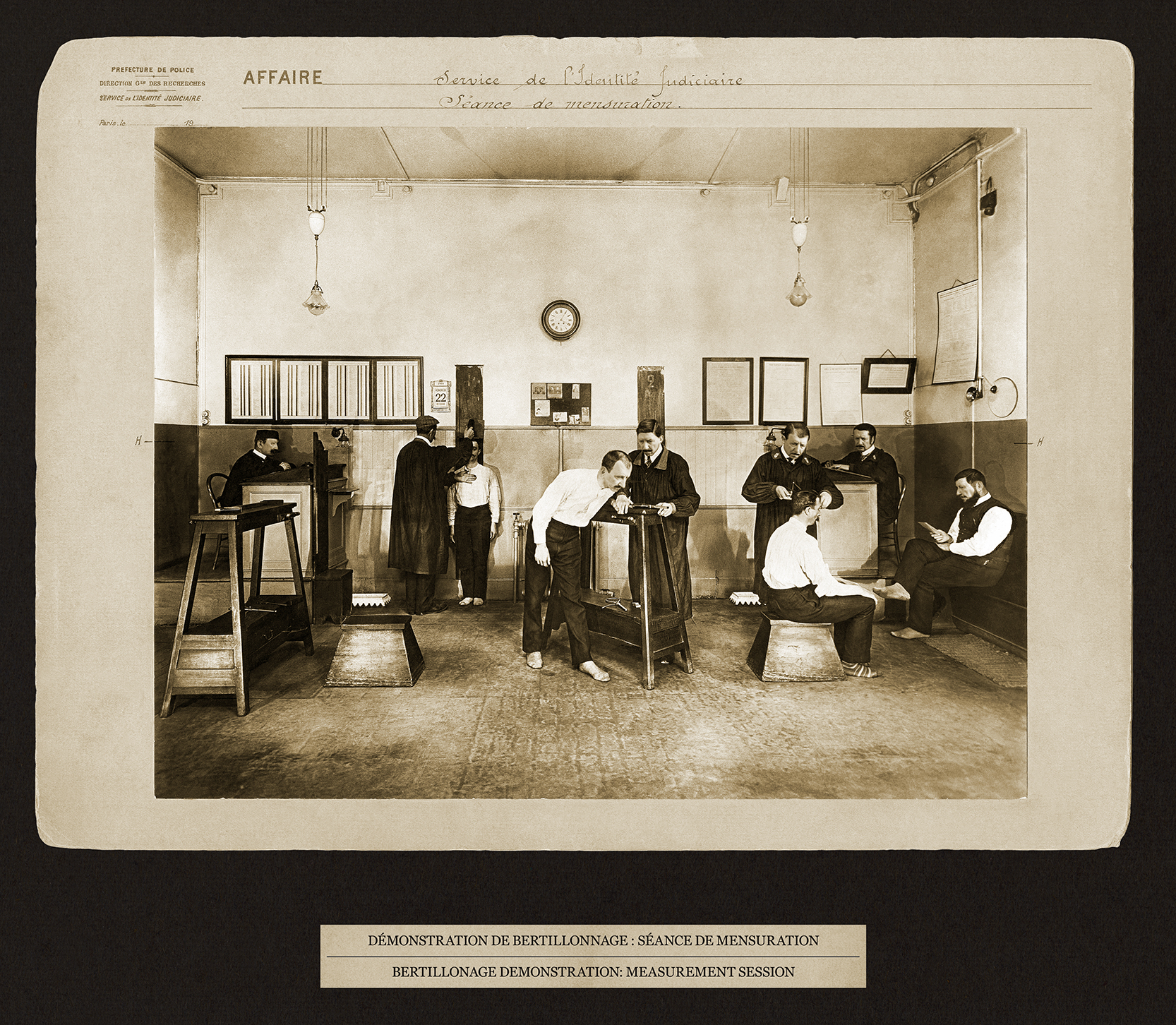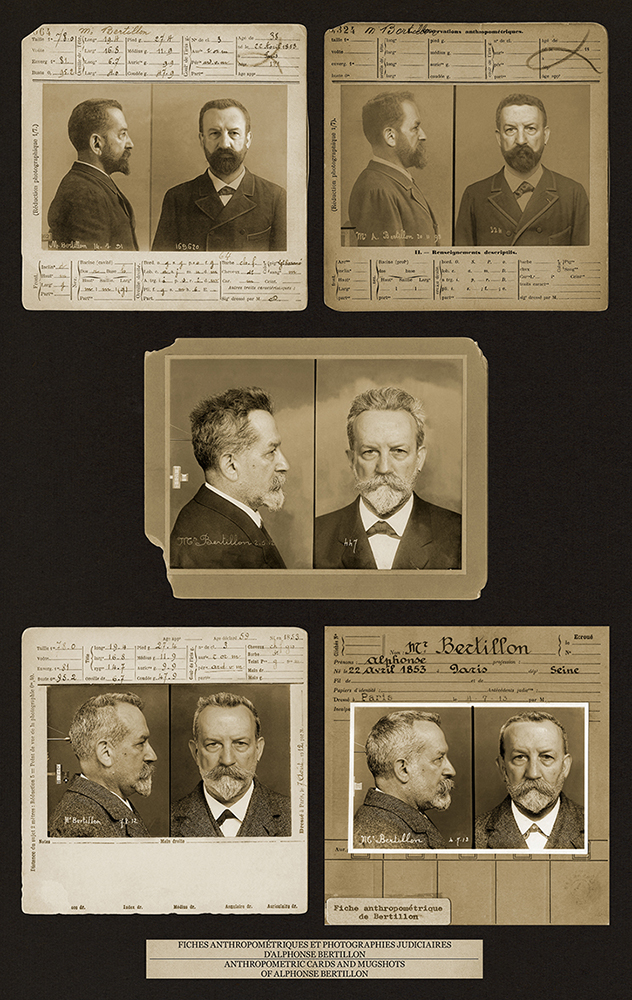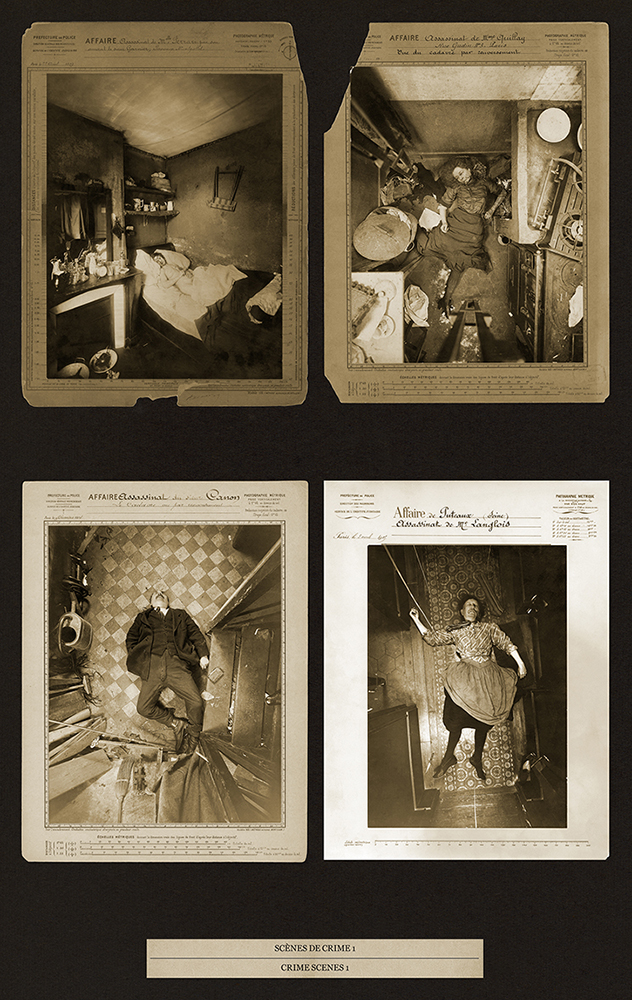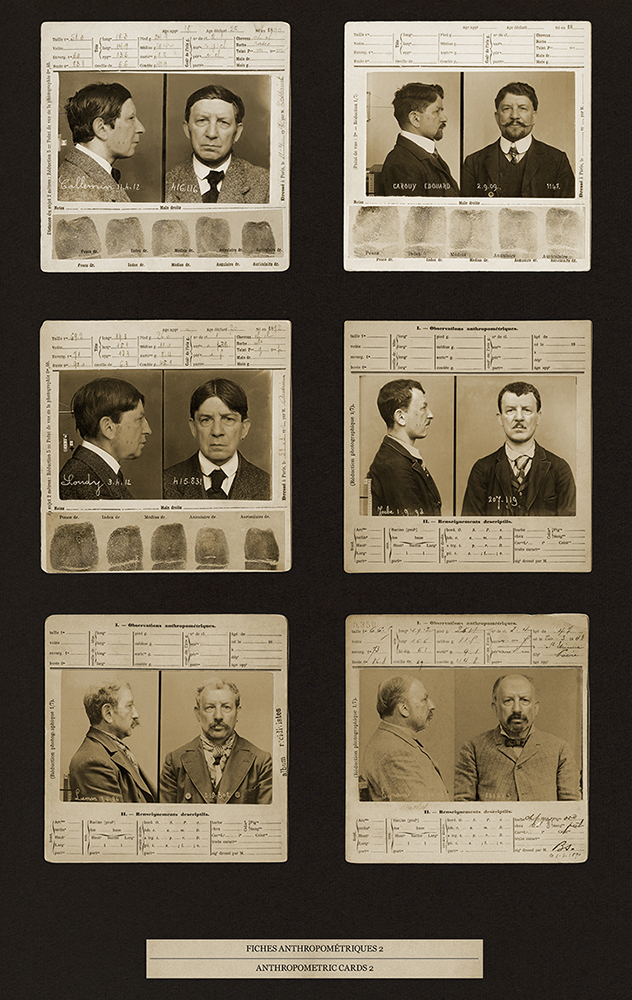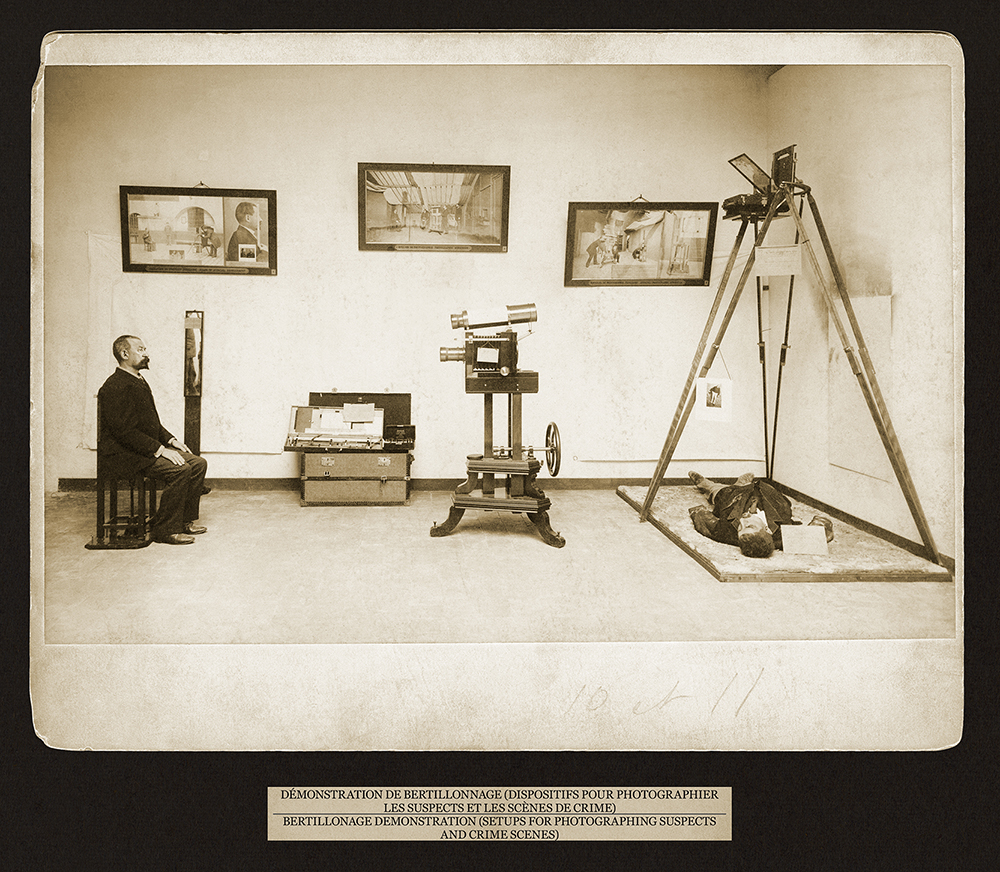ARTIST'S STATEMENT
“One can only see what one observes, one observes only things which are already in the mind.”
– Alphonse Bertillon
Crime and Photography reassesses the topic of photography in the service of the power of the state as well as the relationship between photography and control. The project also revisits a critical moment in the history of the medium in which photographs were first presented as legal evidence – as a portrayal of the truth.
Crime and Photography addresses the work of Alphonse Bertillon, a police officer and biometric researcher in the Parisian police force in the late 1800s and early 1900s. Bertillon introduced his “anthropometric” method (often referred to as the “Bertillon System” or “bertillonage” or “signaletics”) – a series of measurements of specific characteristics of the human body (made with the aid of specialized measuring equipment and protocols) and precise descriptions of physical characteristics (such as eye colour, scars, tattoos, etc.). These developments, which include the invention of the mug shot, cast Bertillon as a pioneer in the use of photography in solving crimes and identifying and apprehending criminals.
Over the years, anthropometry has been employed in a vast array of credible undertakings, including scientific description and epidemiological analysis, but has also been exploited by pseudo-scientists who have used it (and continue to use it) to support eugenics and other explicitly racist ideologies and social movements.
Crime and Photography is the latest chapter in my ongoing and obsessive examination of the medium. By infiltrating myself into Bertillon’s photographs of crimes, criminals, police, victims, etc., the project questions the supposed neutrality of scientific images whose meanings and usage, like most other photographs, can be shaped and altered by their context. The strategy of having myself ‘become’ the subjects of photos from a selected aspect/archive of photography has a leveling effect on the images in question and frees the viewers from assuming the alleged truth and/or reality of the photograph and creates a space in which viewers are invited to reconsider, and to apply critical thinking to, this particular subject matter but also to reflect on photography more broadly.
Acknowledgements
The artist gratefully acknowledges the generous financial support received from the Conseil des arts et des lettres du Québec for the research and creation of Crime and Photography. The studio photography for the project was conducted during an Open Access Residency at the Fonderie Darling in Montréal.
The artist deeply appreciates the valuable research assistance received from the following individuals and institutions:
Bernard Bassette and Maxime Vanhuse, Archives de la Préfecture de Police, Paris
Sylvie Aubenas and Flora Triebel, Départment des Estampes et de la photographie, Bibliothèque nationale de France, Paris
Anaïs Eveno, Musée de la Préfecture de Police, Paris
Pauline Martin and David Schenker, Musée suisse de l’appareil photographique, Vevey
Andrea Kunard, National Gallery of Canada, Ottawa
Vincent Guyot, Société française de photographie, Paris
Christophe Champod, Ecole des sciences criminelles, Université de Lausanne
Sacha Auderset, Ressouces Informationelles et archives, Université de Lausanne
CRIME AND PHOTOGRAPHY: EXHIBITION HISTORY
Coming soon…
CRIME AND PHOTOGRAPHY: BIBLIOGRAPHY
Coming soon…
CRIME AND PHOTOGRAPHY: EXHIBITION AND EDITION DETAILS
Crime and Photography consists of 22 framed archival inkjet prints and a 10-minute single-channel HD video titled La chambre du crime. 18 of the prints measure 57 x 36.8 cm (22 1/2 x 14 1/2 in) and are presented in a grid of 2 rows. Each of these 18 vertical prints is composed of multiple photographs. The remaining 4 framed prints measure 36.8 x 42 cm (14 1/2 x 16 5/8 in) and are hung in 2 groups of 2 on either side of the grid. Each of these 4 horizontal prints consist of a single photograph. The 22 framed photographs take up roughly 6 metres (about 20 feet) of running wall space. The installation is designed to echo the display cabinets that Bertillon used around the turn of the last century to promote his anthropometric system.
An integral element of Crime and Photography, the video, La chambre du crime, explores Bertillon’s work, equipment, and life story (as depicted in radio, film and television) in a manner both more poetic and irreverent than my treatment of the photographs. The voices in the video are either French or English. Two versions of the video have been prepared – one English and one French – each with corresponding subtitles. The two versions of the videos should be looped and presented on a mid-size or larger monitor with headphones or shown as a medium scale projection with a modest sound system. In either case, it is important that the video be positioned so that the viewer cannot see the photographs and the video at the same time.
The framed exhibition prints will fit into two shipping crates (size and weight still to be determined).
Edition
Crime and Photography has been prepared as an edition of 6 signed archival inkjet prints / copies of the video. A specially priced complete set of all 23 works can be acquired (this would be #6 in the edition). There are an additional 2 sets of artists’ proofs (including the complete set of exhibition prints/video).

